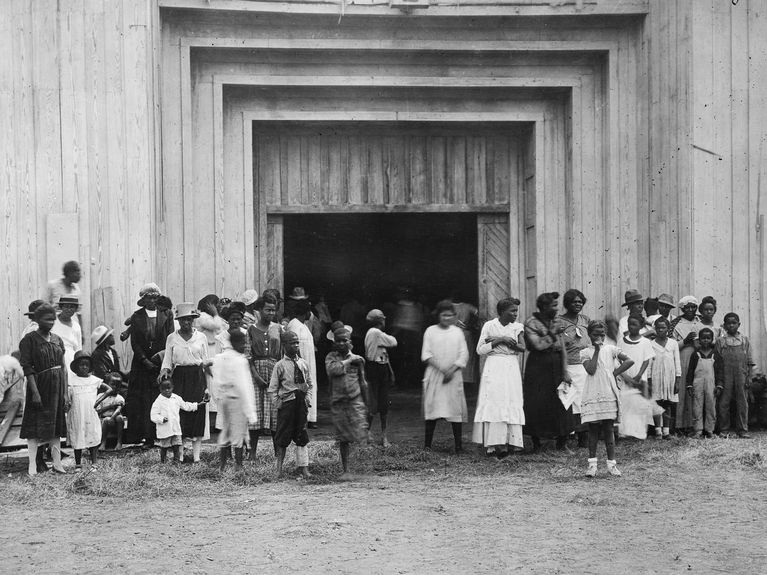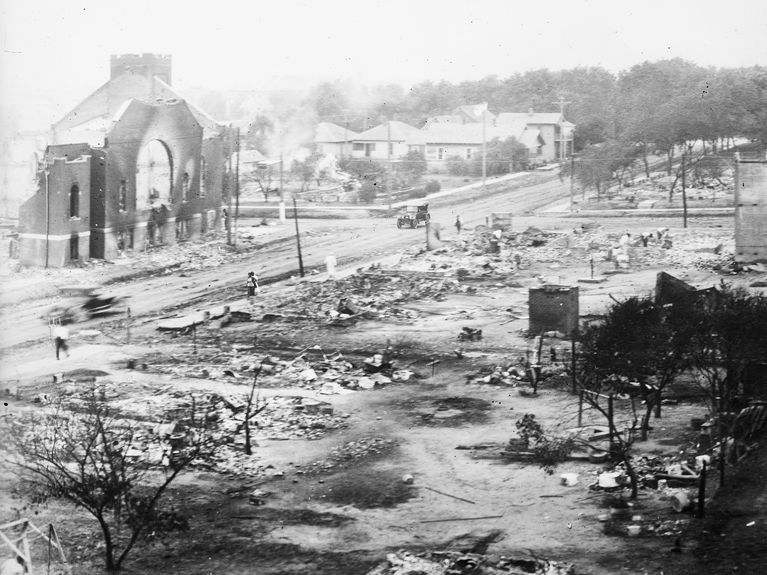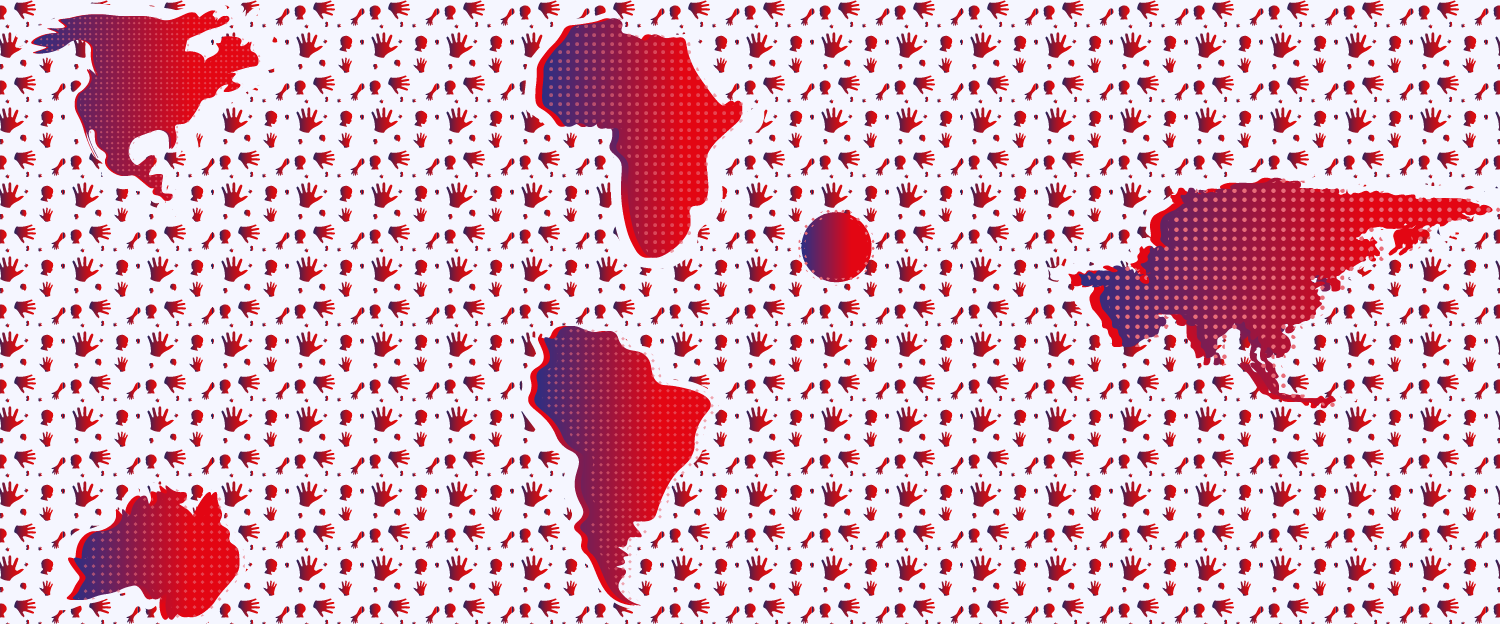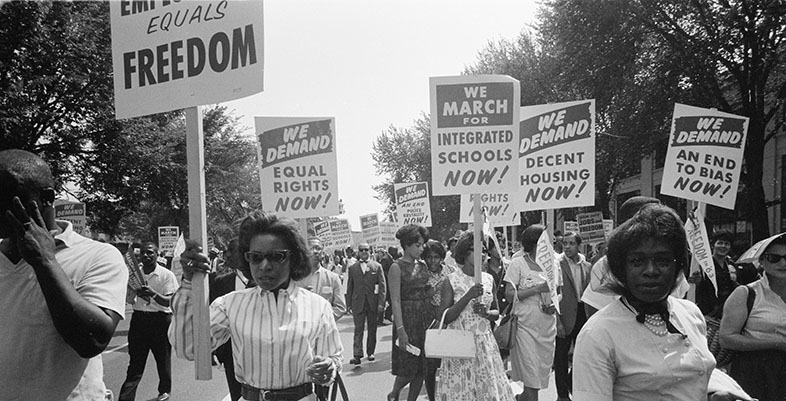This week commemorates the 100th anniversary of the ‘Tulsa Race Massacre’ in Greenwood, north Tulsa, Oklahoma, which took place between 30th May and 1st June 1921. Greenwood, which was a prosperous Black community (known as the ‘Black Wall Street’), was decimated by two days of officially sanctioned terror. Somewhere between 39–300 people died and up to 800 people were injured. The exact number of deaths is not known and the search for hidden mass graves continues to this day. 10,000 African American people were made homeless as large parts of Greenwood district burned to the ground, some of which may have been caused by bombs from private aircraft. There were no criminal prosecutions of the white residents who perpetrated most of the violence, or the state officials who armed them, but thousands of African Americans were interned in the days following the massacre. The long-term harms generated by the Tulsa Race Massacre (and its subsequent cover-up) were not just physical but also psychological and financial, such as the moral injury to survivors, and loss of wealth.
The Tulsa Race Massacre was triggered when Dick Rowland, a 19-year-old African American man, was arrested for pulling the arm of a 17-year-old white woman, Sarah Page, in an elevator. Page, who possibly was Rowland’s girlfriend, was not physically injured. However, a subsequent newspaper story in the Tulsa Tribune reported that ‘Diamond Dick’ (as Rowland was known) had torn her clothes and scratched her face, and indicated she may have been raped. Most significantly the Tulsa Tribune printed a notification (officially removed from the newspaper’s records but found in a private copy of the paper) of the ‘lynching’ of Dick Rowland. On the evening of 31st May, thousands of white residents gathered around the Tulsa courthouse. 75 African Americans also attended, some of them armed, with the intention of helping the police to protect Rowland. After the police rejected their support, some members of the crowd attempted to disarm Rowland’s ‘community protectors’ and a shootout began, resulting in 12 deaths, 10 of which were white Tulsa residents. In response, large numbers of local white people, including white supremacists and members of the Ku Klux Klan, were deputised and weaponised and then went on the rampage.
 African American residents stand outside the entrance to a refugee camp on the fairgrounds in Tulsa after the massacre.
African American residents stand outside the entrance to a refugee camp on the fairgrounds in Tulsa after the massacre.
Despite its shocking nature, for decades the Tulsa Race Massacre remained hidden from history. Key documents were destroyed, and it became something of a taboo subject in Tulsa. The silencing and denial were profoundly harmful, preventing healing or holding those who did wrong to account. 75 years later, in 1996, things started to change. A new public inquiry (which reported in 2001) was launched, corroborating the claim of state complicity with white supremacism. More recently the portrayal of the massacre in two HBO series – Watchmen, broadcast in late 2019, and Lovecraft Country, broadcast in 2020 – resulted in renewed national and international attention.
There have been numerous interventions commemorating the massacre, including documentaries like Tulsa: The Fire and the Forgotten; the belated hearing of testimonies of survivors Viola Fletcher, Hughes Van Ellis and Lessie Evelyn Benningfield Randle in US Congress; and the extensive curating of historical evidence at an online archive #TulsaSyllabus. Belatedly learning today about the terrible events in 1921 may help foster acknowledgement and generate a new willingness to put right past wrongs. Whilst the Tulsa Race Massacre is not the only hidden historical atrocity perpetrated and condoned by state authorities, undoubtedly the resurrection of interest demonstrates the crucial importance of hearing and listening to the voices of victims and survivors, and acknowledging the harms and injustices they have suffered. Ultimately, the 100-year struggle for truth, recognition and reparations by survivors and descendants provides inspiration for people all over the world seeking redress, healing and genuine accountability for social harms and state violence.




Rate and Review
Rate this article
Review this article
Log into OpenLearn to leave reviews and join in the conversation.
Article reviews